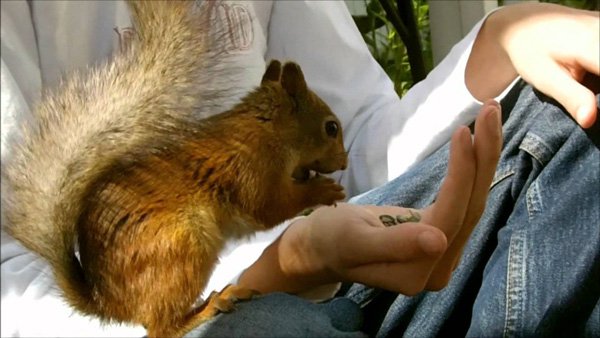

Tetanus is a distressing and painful condition that can affect many animals, including cats, dogs, horses and even humans. Most of us are at least vaguely familiar with the concept of having a tetanus vaccination given to people, particularly if someone has suffered from an injury or accident involving something possibly unhygienic, such as a rusty nail. However, there is no equivalent vaccination available for cats and dogs, and so tetanus is a concern that all pet owners should be aware of.
If you are not entirely sure what tetanus actually is or how to recognise it, read on to find out more about tetanus or lockjaw in pets.
Tetanus is an extremely painful condition that causes the body’s skeletal muscle fibres to contract or shorten, leading to contorted positions, severe stiffness of the muscles, and associated pain. As the condition progresses to the face, it can cause the jaw to lock, hence the colloquial name of “lock jaw” that tetanus is often referred to as.
Tetanus is caused by the bacteria Clostridium tetani, which acts as a neurotoxin within the body. Infection with the bacteria can occur when the skin has been broken and the bacteria is given a route to enter the body, and is most commonly found in the case of deep wounds such as punctures, as these are much harder to clean and disinfect thoroughly.
The tetanus bacteria can live without oxygen and can remain in the body for long periods of time. It usually takes around seven to fourteen days for tetanus infection to present symptoms in pets, although in some cases it can actually take several months to develop.
Any cat or dog that has been injured, particularly if this involves a puncture wound or a foreign body, runs a small risk of developing tetanus, so pet owners should be aware of the early symptoms.
Urinalysis and blood tests are usually performed to detect the presence of abnormal blood cells or high levels of the phosphokinase enzyme, both of which can indicate the presence of the tetanus bacteria in the body. Your vet will need to take a full history of your pet’s health, particularly relating to any injuries or traumas they have acquired within the last year. Tetanus infection becomes progressively harder to treat and more acute and painful the longer it is left to develop, so if you are in any doubt or have any concerns or suspicions regarding your pet’s health, make sure you take them to the vet sooner rather than later.
The treatment protocols used for tetanus vary widely depending on how severe and advanced the condition has become.
The first stage of the treatment protocol involves killing the tetanus bacteria within the body, which is usually achieved with penicillin. Sedation may also be necessary in order to control any spasms or seizures that accompany the condition, which are often triggered by light, sound and touch. Muscle relaxants such as diazepam may be given as well, to try to ease the muscle contractions and stiffness that accompany the disease.
The nursing care required for a pet suffering from tetanus is intensive and specialised, and will usually require an inpatient stay in the veterinary practice. The affected pet must be kept in a quiet, dark environment in order to avoid triggering seizures and exacerbating pain and stiffness, and soft, well-padded bedding must be provided to keep the pet as comfortable as possible and protected from further injury due to seizures. As most pets with tetanus are not able to move freely on their own, they must be physically moved and turned over regularly in order to prevent sores or ulcers from developing due to lying in the same position for prolonged periods of time.
If the attack is particularly severe, intravenous feeding may be required, and the pet may require supplemental administration of oxygen via a breathing tube.
The ultimate survival statistics for pets with tetanus vary depending on the severity of the condition, its progression, and how soon treatment begins. While caring for a dog with tetanus is complicated, intensive and expensive, many dogs go on to recover from the condition and are able to return home to recuperate further. The longer it is left before treatment is sought, the lower the chances of successful intervention, so it is important to contact your vet as soon as you suspect a potential problem.
While people and horses can be vaccinated against tetanus, there is no vaccine available to prevent tetanus from developing in dogs and cats. However, paying close attention to your pet’s day-to-day welfare and condition can help to prevent many illnesses from developing, and being extremely careful and cautious about the handling and cleaning of any wound or injury is vital as well. If your pet injures themselves, particularly if the wound is deep, make sure that you seek veterinary treatment, even if the wound is not bleeding profusely and appears to be healing on its own.
 Professional Help For Pet Sitting And Grooming
Professional Help For Pet Sitting And Grooming
 Chihuahuas Get a Solid “YES” From Paula Abdul
Chihuahuas Get a Solid “YES” From Paula Abdul
 The Regulatory Authority For The Recall Of Foods
The Regulatory Authority For The Recall Of Foods
 Ragwort – What Every Horse Owner Should Know
Ragwort – What Every Horse Owner Should Know
 Taking Your Cat Abroad? Are They Protected Against Heartworm Disease?
Taking Your Cat Abroad? Are They Protected Against Heartworm Disease?
 Chicken Houses - for this Summer and the Ones to Come
Chicken Houses - for this Summer and the Ones to Come
Copyright © 2005-2016 Pet Information All Rights Reserved
Contact us: www162date@outlook.com